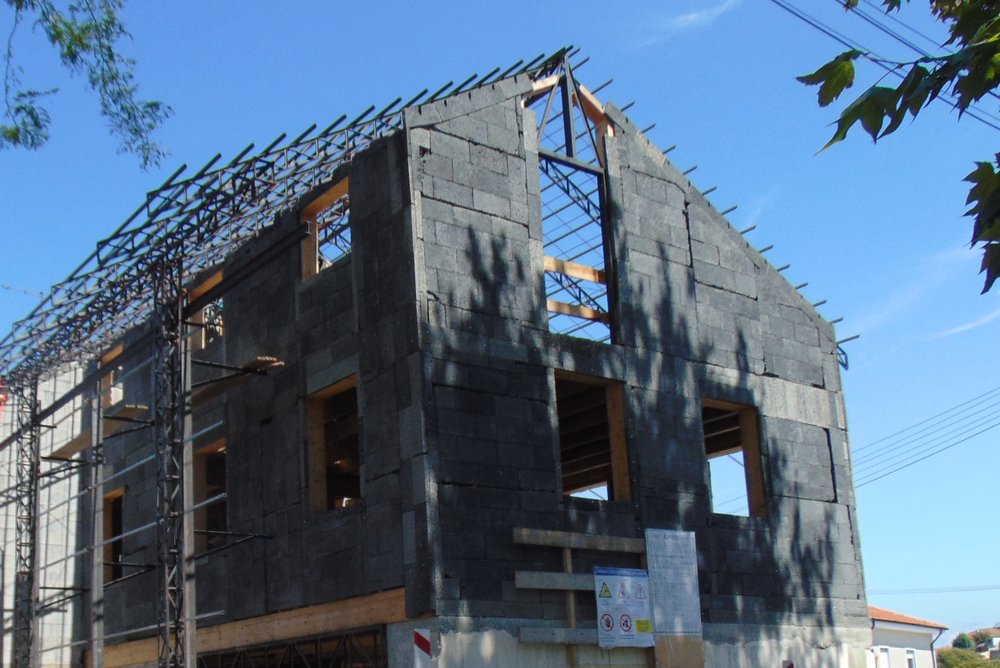

By João carvalho, Canareorter.eu
Oficina de Arquitectura Pedrez, based in Porto, was created in 2020 by Matilde Cabral and Francisco Adão da Fonseca and was born from the couple’s decision to work together, combining Matilde’s textile knowledge with Francisco’s architectural visions.
In the work presented here, the reconstruction of a single-family house, on a hillside overlooking the Douro River, hemp straw combines with the concept of burnt wood, from Japan, with the notion of the different reactions of each material in terms of PH , the logic of multilayers and the CO2 retention capacity and positive ecological footprint of this natural fiber. ..
What is the program of this work, Francisco?
This work is a house, in the center of Porto, with all the characteristics of an urban dwelling, in which we reuse a work of art that was built at the José de Guimarães International Arts Center (CIAJG). We reuse this sculpture, a massive sculpture, several walls measuring tens of m2 in this mixture of hemp concrete with charcoal, we reuse it in a house, in what, we now see, a posteriori, is an authentic prefabrication part.
So, did you take a massive wall, cut it into blocks and fill in the needs of the work?
Precisely that. There was a wall, we cut it and now we rebuilt that “Lego” in a new construction.
In relation to eco-construction, why the use of hempcrete as a building material?
O hempcrete it is the most capable material I have ever come into contact with. I have experience in various types of construction, in various so-called sustainable construction systems and I have never come into contact with anything as complete as hemp concrete. It is the only building material/system (because it then implies a certain construction system) that allows us to make 25 cm walls that comply with thermal, acoustics, fire regulations and with which, to a certain extent, we were also able to meet the requirements of a facade material and aesthetic requirements for finishing the interior of the walls, so there is no other building material as capable, in terms of construction, as this one. This is not to mention the indirect characteristics of the life cycle of the material, which bring us agricultural benefits, employability, capacity for restructuring soils that are exhausted, desertified, so to speak. So I think it’s material that, if we talk about its potential, would give here another four-page article alone!
In addition to this incredible array of uses or characteristics, you decided to add charcoal as one more component of this mortar. Why? Burnt, charred wood is historically used as a wood protection measure on the exterior of buildings. It is a technique usually attributed to the Japanese, called Sugi Ban, which we wanted to adapt for hemp construction, by inserting charcoal into the mixture and/or burning the hemp straw itself, so that, outdoors, it is not necessary to give the material any type of treatment.
Francisco Adão da Fonseca and Matilde Cabral at the hemp and charcoal house in Porto. Photo: João carvalho
Please Support Our Classified Advertisers
(To find out more about advertising CLICK HERE).
Help Wanted:
Training and Education
Publications
-
Hemp Building Directory 2022 – Guide to the International Hemp Building Industry
-
Available Now! “Hemp Buildings – 50 International Case Studies” by Steve Allin
Hemp Hurd (shivs)/Hemp Fiber/ Hemp Microfiber
Hempcrete installers/Insulation subcontractors
Lime Binder
Hemp Batt Insulation/Supplies
Green Builders
Hemp Building Engineers
Hemp Genetics
Professional Associations
Events
Originally published August 8, 2022 on Hemp Building Mag
https://www.hempbuildmag.com/home/hempcrete-and-charcoal


